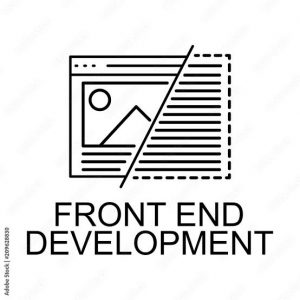In the ever-evolving landscape of technology, frontend development continues to play a pivotal role in shaping user experiences.

As we step into 2024, several trends are emerging, driving innovation and redefining the way we interact with web applications. Let’s delve into the key frontend development trends that are set to dominate the scene this year.
WebAssembly (Wasm) Taking Center Stage:
WebAssembly, a binary instruction format, is gaining traction for its ability to execute code at near-native speed in web browsers.
Expect to see increased adoption of Wasm for performance-critical tasks, enabling developers to build more powerful and efficient web applications.
Progressive Web Apps (PWAs) Becoming Standard:
Progressive Web Apps, offering a seamless user experience across devices, are becoming the norm.
As browser support improves and developers embrace the PWA architecture, users can anticipate faster load times, offline functionality, and an overall enhanced user experience.
AI and Machine Learning Integration:
Frontend development is evolving with the integration of artificial intelligence and machine learning.
Smart recommendations, personalized content, and advanced data processing are set to become more prevalent, enhancing user engagement and satisfaction.

Voice User Interfaces (VUIs) on the Rise:
With the increasing prevalence of voice-activated devices, frontend developers are adapting to incorporate Voice User Interfaces.
Expect more websites and applications to provide voice-controlled interactions, making user interfaces more accessible and user-friendly.
JAMstack Architecture Gaining Momentum:
JAMstack (JavaScript, APIs, and Markup) architecture continues to grow in popularity. This decoupled approach allows for improved scalability, security, and faster load times. Developers are leveraging JAMstack to build robust and performant web applications.
Augmented Reality (AR) and Virtual Reality (VR) Experiences:
Frontend development is expanding into the realms of AR and VR, creating immersive experiences on the web. From interactive product previews to virtual tours, expect to see more websites incorporating AR and VR technologies to engage users in novel ways.
Dark Mode and Accessibility:
Dark mode is no longer just a design preference; it’s now a crucial accessibility feature. Developers are increasingly focusing on creating interfaces that accommodate various user preferences and needs, promoting inclusivity in frontend design.
Low-Code and No-Code Development Tools:
As the demand for rapid application development increases, low-code and no-code tools are gaining popularity. Frontend developers are leveraging these tools to accelerate the development process and empower individuals with limited coding experience to contribute to application creation.
Conclusion:
The frontend development landscape in 2024 is marked by innovation, inclusivity, and a commitment to delivering exceptional user experiences.
As technology continues to advance, staying abreast of these trends will be crucial for developers aiming to create cutting-edge web applications.
Master Your Coding Skills with BootSelf AI
If you're looking to enhance your coding abilities and upskill in artificial intelligence, look no further than the BootSelf AI app. This innovative platform provides AI-based coding lessons that are tailored to your individual learning pace.
Available on both iOS and Android, you can download the BootSelf AI app and start mastering coding skills today:







